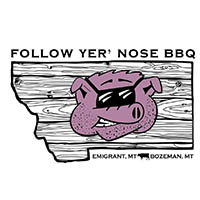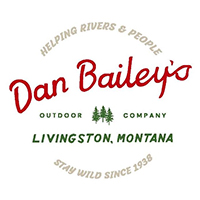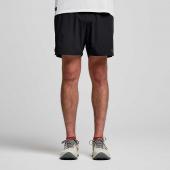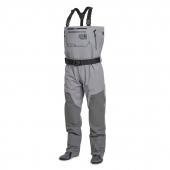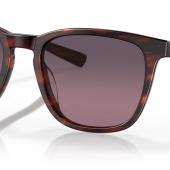Face-Off: Fleece vs. Wool
Splitting threads on outdoor insulation.
Anyone who’s agonized over the purchase of an important piece of outdoor clothing—say, a warm winter coat or an all-season midlayer—the following dilemma has surely ensued: fleece or wool? Which is the superior fabric? Both materials are excellent for insulation in chilly weather, and though they have vastly different origins, the end results are similar. Wool, which comes from sheep, is nature’s convenient resource for moisture-wicking clothing; while fleece, made of polyester, is a solution of modern engineering. Both products have their own benefits and shortcomings, but which is better overall? Read on to see how the score settles out.
You can wear wool again and again without building up a stench, while a fleece will smell like a gym locker after even a moderate sweat.
Comfort
When fleece first became popular in the ’80s, it was widely considered a more comfortable alternative to itchy, scratchy wool. Recently, however, products made from plush, silky merino wool have given fleece a run for its money on comfort. If there’s any edge here, it comes down to personal preference. Edge: Tie
Durability
Old-school, thick-denier wool is the king of durability. While fleece is prone to pilling—losing its warmth and eventually wearing through—you’ll still find tons of old wool garments in thrift shops and army-surplus stores. But that rough, bristly wool isn’t very comfortable, and the comfy fine-merino wool isn’t very durable. Fleece is pretty standard across the board in terms of durability, falling right in the middle of the various wool options; so again, we’re splitting hairs here. Edge: Tie
Breathability
This one’s important—after all, both fabrics are cherished for outdoor recreation because of their moisture-wicking properties. And it’s a close call, because each material is pretty dang good at it. But while wool maintains its loft when wet, it does soak up more moisture than fleece, and takes quite a bit longer to dry. Fleece absorbs much less moisture in the first place and dries lightning-fast; it can even fully dry on your body while out in the cold. Wool takes a bit more coaxing. Edge: Fleece
Versatility
While fleece is dependable—you know exactly what you’re getting—wool comes in a huge variety of weaves and thicknesses, so you can pick out a garment with the exact qualities you’re looking for, whether it’s a silky-smooth baselayer or rugged, durable socks. What’s more, wool is flame-resistant, so you don’t have to worry about flying embers from the campfire burning holes in your sweater. And the real kicker is wool’s natural antimicrobial properties: you can wear it again and again without building up a stench, while a fleece will smell like a gym locker after even a moderate sweat. Edge: Wool
Heritage
Fleece is purpose-built for outdoor activities, specifically designed to keep you warm while working hard in harsh environments. But it’s only been around since 1979. Wool, of course, has been used to make clothing for thousands of years. Worn across social classes from peasants to monarchs throughout the millennia, to say wool is “time-tested” would be a gross understatement. And sheep, the source of wool, are coveted in cultures across the globe for providing this valuable resource. Edge: Wool
Fleece absorbs much less moisture in the first place and dries lightning-fast; it can even fully dry on your body while out in the cold. Wool takes a bit more coaxing.
Sustainability
The idyllic view of wool’s natural origins and simple production make it seem like a clear winner here. And it’s true that high-end wool garments are produced by ethical, sustainable operations, but that isn’t necessarily the norm. Cheaper wool garments are often sourced from animals on overgrazed lands where massive flocks have displaced native wildlife, and fabrics may be treated with toxic chemicals in countries that lack stringent health regulations. Fleece, on the other hand, is made from petroleum—a non-renewable, greenhouse-gas producing resource. However, fleece can be recycled, and can be made from recycled plastic bottles. This process is far from perfect today, but has potential to promote a cleaner future. Edge: Tie
Price
Sure, you can find some thick, scratchy wool garments at Goodwill for pennies on the dollar, and if you’re wearing those, more power to you. But for us mere mortals who would rather not have a sweater that chafes our skin like a cheese-grater, this one is no contest. While a brand-new fleece may run you $50-80, a merino-wool sweater will put you out $150-200. Edge: Fleece
Score: 2 to 2
Winner: Tie
Try as we might, we can’t call a winner here. Both fleece and wool are great options for outdoor insulation, and you can’t go wrong either way. While wool comes in more varieties and presents more options, there are always trade-offs between comfort, durability, and price. Fleece isn’t perfect, either, but it’s always dependable. Both materials have the potential for sustainable production; it’s on you to support the operations that are doing it right. And in the end, there’s nothing stopping you from wearing fleece one day and wool the next. As far as we’re concerned, quality outdoor apparel is like time spent outside: just a little bit more is a whole lot better.








